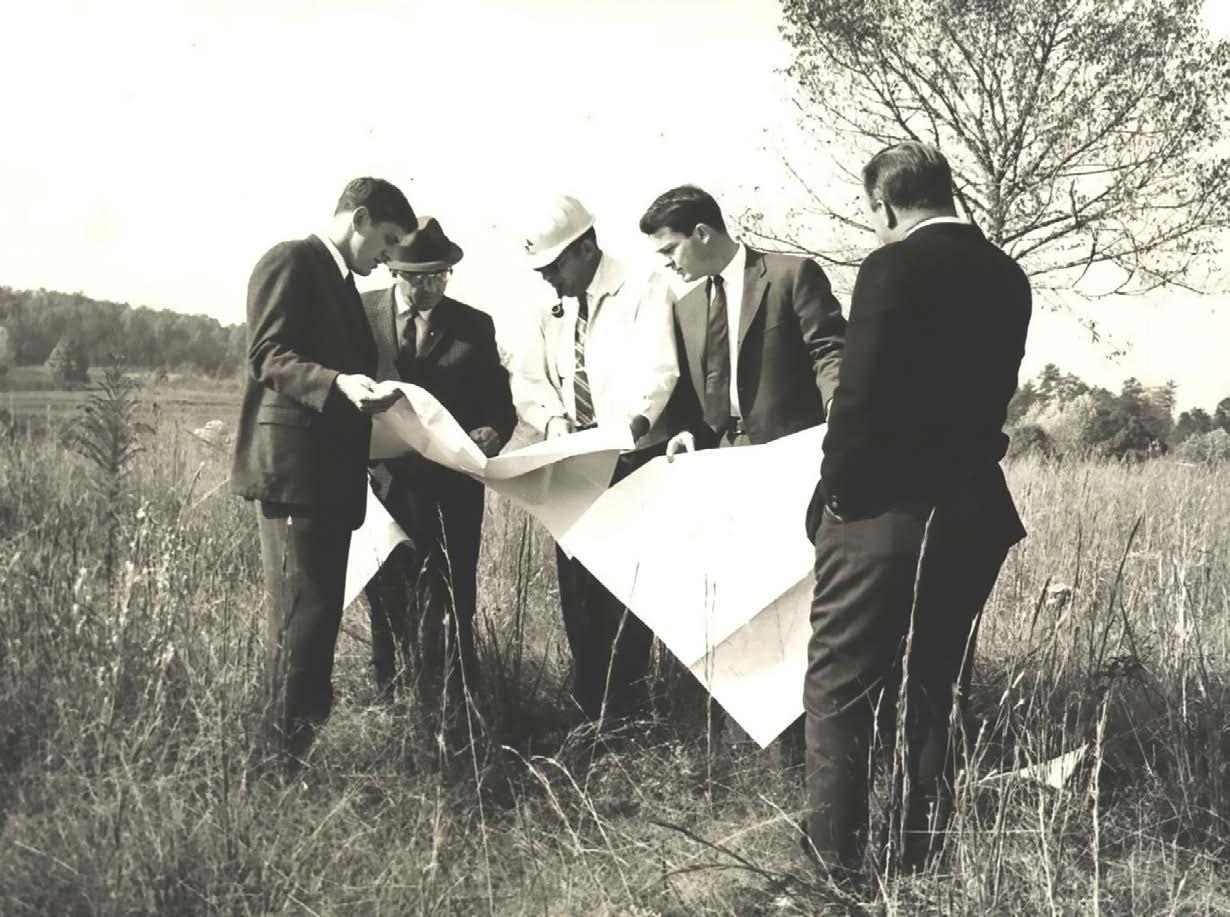FRIENDS

OF LAKE KEOWEE SOCIETY


OF LAKE KEOWEE SOCIETY
By Dale Wilde, FOLKS President
In 2023, the special edition celebrating FOLKS’s 30th anniversary focused on our organization’s history. In 2024, we continued to move forward and remain relevant in the watershed, we reflect on the history of the watershed and provide a glimpse of the future of the watershed. I have discovered since purchasing my property on Lake Keowee in 2012 and joining the FOLKS board in 2018, that South Carolina has a rich history.
The history of the Carolinas dates back to the 16th century when Spanish and French explorers arrived in the area that was already inhabited by Native Americans. In 1663 King Charles II granted the land of Carolina to eight English noblemen. The establishment of separate colonies did not officially occur until 1729.
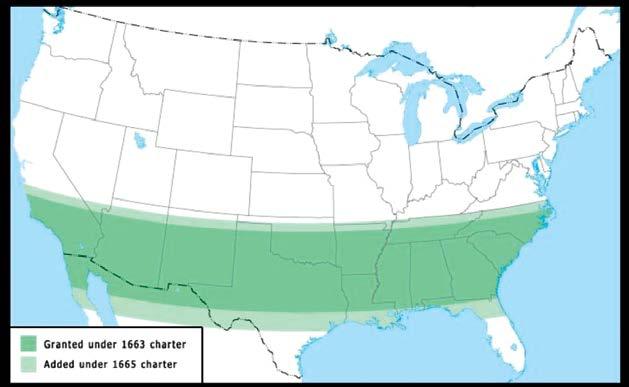
On May 20, 1777, delegates from the Lower Towns of the Cherokee Nation and officials from the regions of South Carolina and Georgia met to sign the Treaty of Dewitt’s Corner to end the Second Cherokee War. By signing the treaty, the Cherokees relinquished almost all their lands to South Carolina including what is now Anderson, Greenville, Oconee, and Pickens Counties. (See map of South Carolina tribes on page 4.)
South Carolina ratified the U.S. Constitution on May 23, 1788, to become the eighth of the original 13 states to join the Union and North Carolina became twelfth state in the Union on November 21, 1789. From the time of colonization through the Civil War period, the Carolinas were poor, rural, and largely agricultural. This connection to agriculture is key to understanding how the Duke family sought to harness the power of water and its subsequent economic development of region.
(continued on page 4)
BOARD OF DIRECTORS
Dale Wilde, President
Howard Gutenstein, Vice President
Sam Savoca, Secretary
David Metzger, Treasurer
Timothy Cooley
Henry Wilson, PhD Dr. John Hains
COMMITTEE CHAIRS
Dave Metzger, Lake Sweep
Paul Gibbons, Adopt-an-Island
Ann Savoca, Adopt-a-Lake
Endowment/Finance David Metzger
Events/Advertising
HEP
Magazine
Design
Higgs
Pleadwell
Adair, Community Journals Advisors
Sommer
folks@keoweefolks.org facebook.com/KeoweeFOLKS
© 2024 KEOWEE is published six times a year and mailed to active FOLKS members. Any reproduction or duplication of this publication, or any part thereof, must be done with the publisher’s written permission. FOLKS is not responsible for the claims made by the advertisers.

James and Benjamin Duke, for whom Duke Energy is named, played a pivotal role in pioneering the electric power industry that has been a major factor in the twentieth-century development of the Carolinas. Their interest in hydroelectric power was an outgrowth of their investment in the textile industry in the Carolinas. They were among the wealthiest businessmen, largely from their original business success in the tobacco industry, which provided the capital to invest in large-scale hydropower development. James Duke’s goals and vision were to develop a comprehensive water powered system in the Carolinas instead of the random development of power generation at isolated locations that was occurring elsewhere in the
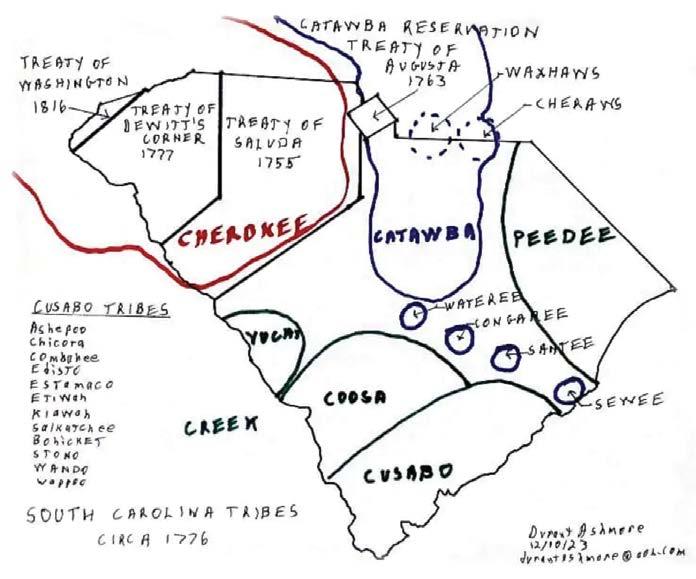

Illustration provided by Southern Adventures, adairholland.com.
early 20th century.
It’s not easy to just drop a pin on the dateline of the development of this region. The land in this region was first inhabited by the Native Americans, namely, the Cherokees and to the east the Catawba, which is the only federally recognized tribe in South Carolina. The historical record for that time period is rich, therefore, this magazine issue will jump ahead and focus on the initial modern development of the region and its harnessing of hydroelectric power that was the driving force of its modernization.
The articles in this special edition are intended to help you, our members, understand the history behind the effort that created the lakes in the watershed and enabled us all to live in this region and enjoy the beauty that surrounds the Upstate.
The timeline at the end of this section details key dates and identifies milestones in history that have led this region to be one of the most sought-after places to vacation, live, and work.
View the historical timeline on page 6.

1788 South Carolina became the eighth state.
1820 Washington Duke was born in North Carolina.
1855 Benjamin Newton Duke was born to Washington Duke and Artelia Roney (d. 1929).
1856 James Buchanan (Buck) Duke was born to Washington Duke and Artelia Roney (d. 1925).
1861 Civil War begins between the Union to the north and Confederacy of the south. Washington Duke was called to serve in the Confederate Army.
1865 End of Civil War. Washington Duke returned home and founded W. Duke and Sons Company. Sons Benjamin and James Duke were equal partners in running the growing tobacco business.
1890 James Duke and Benjamin Duke controlled the largest tobacco industry in the world. At the age of 33, James became the president of the American Tobacco Company.
1904 On April 30 Catawba Power Company’s Hyrdo Station began operation, which is considered the birthdate of Duke Power (now known as Duke Energy).
1905 Washington Duke passed away at the age of 84. The Duke sons began to focus on the growth of the textile industry in the Carolina’s and the industrial uses of electric power.
1905 Southern Power Co. incorporated under the laws of New Jersey.
1907 Carolina Power and Light founded.
1910 James Buchanan Duke named president of Southern Power Co.
1911 Greenville Steam Station, the first coal-fired generating station, started operations.
1916 Historic flood prompted creation of interlocked reservoirs to manage water levels and produce hydroelectric power.
1924 Southern Power renamed Duke Power.
1963 Duke Power Company formed Carolina Land and Timber Company (known as Crescent Resources, Inc.), which purchased 83,400 acres of land to create Lakes Jocassee and Keowee.
1966
The Federal Energy Regulatory Commission (FERC) issued license for Keowee-Toxaway Project (FERC Project P-2503), which authorized the construction of the two reservoirs—Lake Keowee and Lake Jocassee.
1967 Construction began for Lake Keowee.
1968 Construction began on the Jocassee Dam and Powerhouse.
1970 Jocassee Dam completed.
1971 Keowee-Toxaway Project built, and the two-unit Keowee Hydro facility began operations and Lake Jocassee started filling.
1973 Jocassee Pumped Storage Facility Commercial operation of Units 1 and 2 began operation
1975 Jocassee Pumped Storage Facility Commercial operation of Units 3 and 4 began operation
1975 Duke Energy received American Civil Engineering Award for Keowee-Toxaway Project.
1977 FERC issued a 50-year license for the operation of Bad Creek Hydro Station (FERC Project P-2740).
1991 Bad Creek Pump Station began operations.
1993 Friends of Lake Keowee Society was established and became a stakeholder in the watershed.
1997 Duke Power merged with PanEnergy to create Duke Energy.
2006-07 Jocassee Hydro Station upgraded units 3 and 4.
2011 Jocassee Hydro Station upgraded units 1 and 2. Total station capacity 780 MW.
2016 FERC issued a 30-year license for Duke Energy’s Keowee-Toxaway Hydroelectric Project that includes Jocassee Hydro and Keowee Hydro Stations.
2022 Duke Energy’s Bad Creek Reauthorization process started, which will include a proposal to construct Bad Creek II.
2024 Jocassee Hydro celebrated 50 years of energy production.
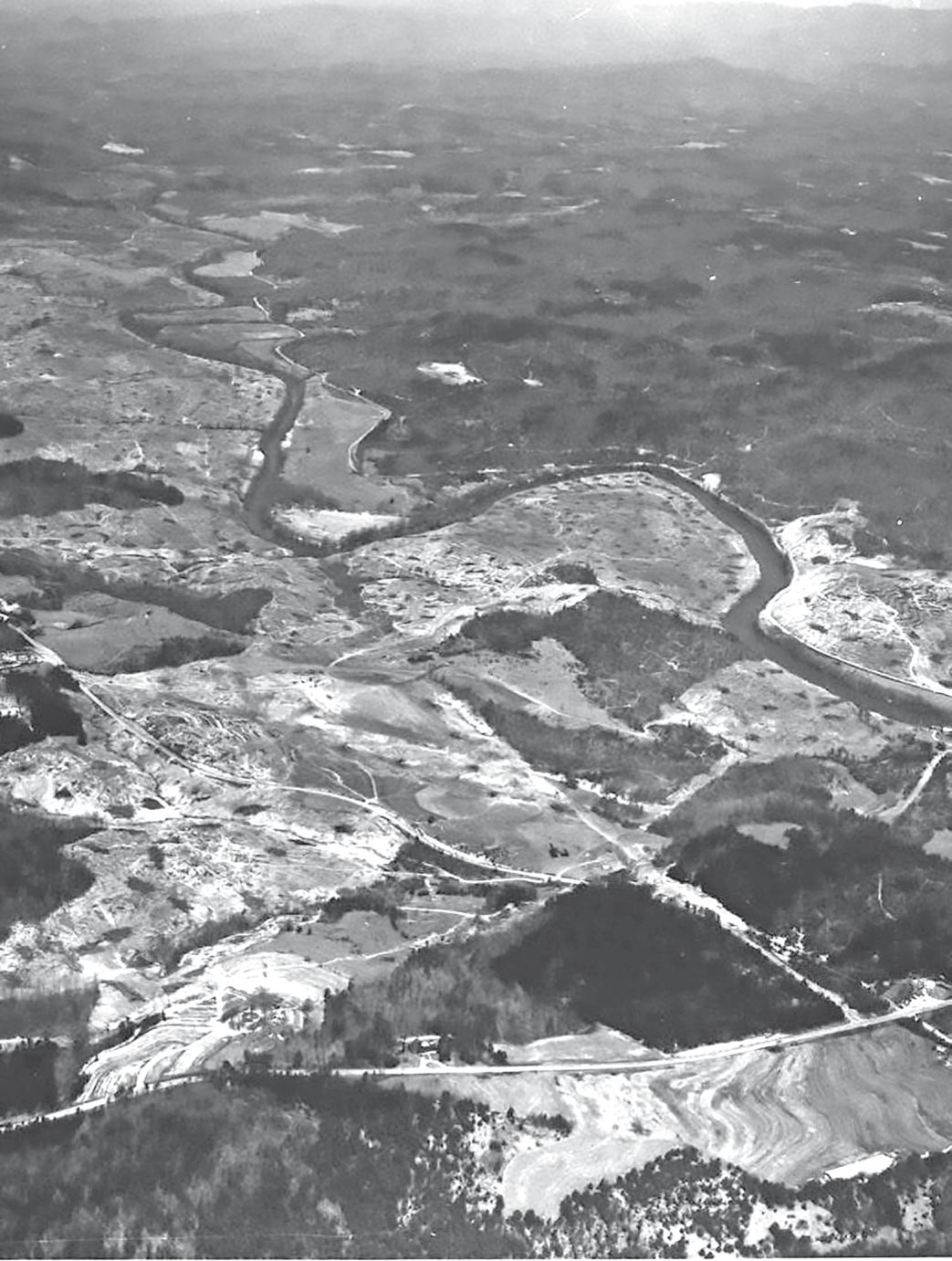
The research for this special addition came from numerous sources. The following is a list of books and websites that are useful to further understand the history of area and the connection to the energy needs that sustain the on-going development of the region. The Duke brothers were influential and inextricably linked to early modernization of the Carolinas.
The Dukes Of Durham 1865-1939 by Robert F. Durden
Southern Water, Southern Power: How the Politics of Cheap Energy and Water Scarcity Shaped a Region by Christopher J. Manganiello
Duke Power The first 75 years by Joe Maynor
Websites used for reference: badcreekpumpedstorage.com elibrary.ferc.gov/eLibrary duke-energy.com
The financial legacy that created the present-day Duke Energy
BY DALE WILDE, FOLKS President
Washington Duke single-handedly started building the Duke family wealth in farming and acquiring land for expanding agriculture. Initially he focused on corn crops.
Washington Duke and his second wife, Artelia Roney (b. 1829, d. 1858 of typhoid), had three children Mary Elizabeth Duke (b. 1853), Benjamin Newton Duke (b. 1855), and James Buchanan (Buck) Duke (b. 1856).
At the age of 43, Washington Duke was drafted into the Civil War. At the end of the war he began investing in local agriculture and what would become the largest tobacco manufacturing business in the world.
In 1865, he converted a corn crib into tobacco factory. Sons Benjamin and Buck were equal partners in running the growing tobacco manufacturing business.
By 1890, James controlled the largest tobacco industry in the world and was the president of the American Tobacco Company (ABT). At the turn of the 19th century, James and Benjamin explored opportunities outside of the tobacco manufacturing business and were instrumental in growing both the textile industry in the Carolinas and the industrial uses of electric power.
In 1904, the Duke brothers purchased the Catawba Power Company, the first investor-owned electric utility. James worked closely with Dr. W. Gill Wylie and William States Lee to develop and design the burgeoning power grid in the south. Through numerous mergers and acquisitions, that company would go on to play a major role in the industrial transformation of the Piedmont Carolinas,
DID YOU KNOW:
Since 1925 the Duke Endowment has given more than $3 billion to organizations in the Carolinas
and later, as one of the nation’s largest generator and utility companies.
Washington Duke passed away in 1905 at the age of 84, leaving his sons a considerable fortune, which was largely reinvested into developing the southeast’s industrialization and electrification.
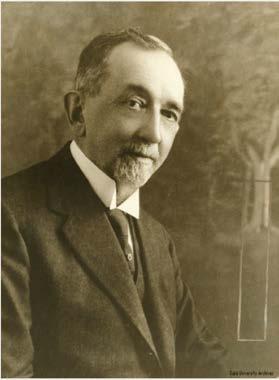
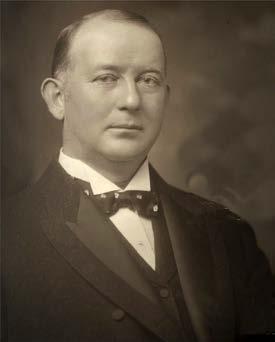
In 1911, a Supreme Court ruling dissolved the American Tobacco Company, thus breaking up the monopoly of the tobacco trade. Benjamin had served as Vice President of ABT and followed in his brother’s footsteps into the textile and energy industries. As James focused more of his efforts on electric utility expansion, Benjamin directed his attention on the textile industry and philanthropic donations to higher education, namely Trinity College (now known as Duke University). Through the 1910s, members of the Duke family created the Duke Endowment.
In 1924, a year before James’s death, he endowed Trinity College with $67 million, and the name was officially changed to Duke University.
Since 1925 the Duke Endowment has given more than $3 billion to organizations in the Carolinas. James Buchanan Duke businessman, philanthropist, visionary for all his successes, for all his wealth, he never lost his love for the Carolinas. His ties to the land that gave him his humble start. His legacy continues.

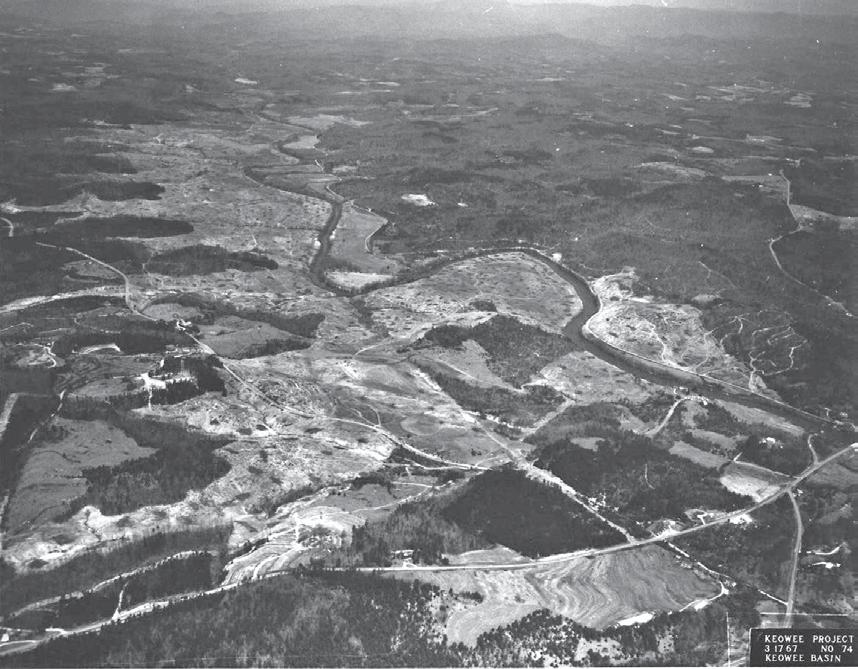
BY EDDIE MARTIN
The earliest human history of the Mountain-Lakes area of Oconee (before the lakes) looks back to the Cherokee—The Principal People, The Beautiful People as they designated themselves. Known by their enemy nations as the cave dwellers, they were fierce both in battle and in defense of their homeland. Many of today’s place names revere these early inhabitants. The county itself is named for the Cherokee community that once existed here. Others include Jocassee, a tragic story of a native maiden; Eastatoe, valley of the green bird, the now extinct Carolina Parakeet; Cheohee (pronounced “chowee”), the otter place; Keowee, the mulberry place; Tamassee, and Toxaway.
For generations, the Cherokee fought off intrusion from their neighboring enemies. They also carried out forays and attacks on the surrounding areas and distant lands. Then from across the great waters, wave after wave of settlers arrived. Battles were fought; concession after concession was made. Agreements were broken. In the course of a few hundred years, the Cherokee lost all of their land in South Carolina, a people gone but remembered only in the names they gave to a unique and beautiful area.
History does indeed repeat itself. A people inhabit a wonderful
place on Earth. Then others find it. Others displace those in possession. The first wave of settlers in this area came from the north and the south. From the North/Northeast came primarily Scotch/Irish, Highlanders looking for a place reminiscent of their homeland. They were rough, rowdy, independent and suspicious of government. From the South came the English, many loyal in their belief in government and rule of law. Fewer French and Germans came, but some settlements were established. In those groups lay the basis for the descendants who would carve out an existence in the area now known as Oconee.
Traits that are the inherited characteristics of people, passed down from generation to generation, helped define the population that would inhabit the area. As a result, the inhabitants held onto the clannish tradition of independence and wariness of outsiders. They displayed a frontier spirit, rugged self-sufficiency, self-reliance, and self-assurance. The river bottoms and surrounding areas created wonderful farmland. The forests offered game to be harvested and timber to be felled. The mountainous terrain allowed for small pocket communities that were selfsufficient with grist mills, saw mills, small general stores, etc. Road building and increased population concentrated the

commerce into what became larger towns. People would then travel to get necessities instead of creating them from their homecraft, a further dilution of the connectedness to the land.
Music played a big part in the tradition of the area. It provided relief from the hard work and rough existence. It was also a connection to the ancient homeland and forebears. The Old English and Scotch/Irish balladry ritual and the jigs, reels, and hornpipes could be heard ringing throughout the coves of Appalachia. The melding of the music can still be heard in Old Time genre, Bluegrass, early Hillbilly, and Country music, and it had an influence on Blues and Rock and Roll.
Prior to the lakes, communities would gather to enjoy fellowship through music and dance. The music is one of the customs that still survives in the area, although much reduced. Gone are most of the farming communities, a lot covered by water, others broken up by development. Timber is still harvested, but now instead of replanting, later generations opt to sell the land after harvest.
Technology, industry, and development continuously alter the terrain with the influx of new people and new ideas. Over the generations, the only constant is change, some good, some not so good. It is the history of the people and their traditions that created the legacy of Oconee’s mountainous haven. Let it be celebrated, remembered, and now and again participated in so that the legacy of those before the lakes may live on.
OPUS TRUST is a 501c3 dedicated to the preservation of open space and historic structures in Oconee and Pickens Counties.
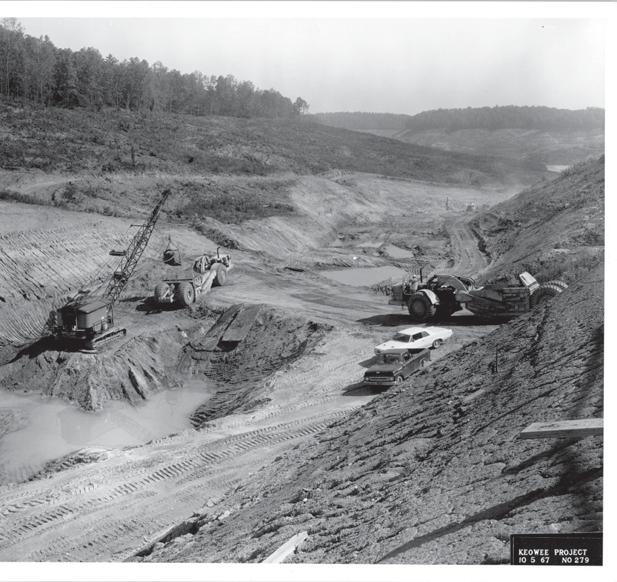


BY DALE WILDE, FOLKS President
Early landowners and farmers learned how to harness water’s energy to generate power to run their gristmills and lumber operations. Even before the Civil War began in 1861, Piedmont southerners had begun to move beyond agricultural production and muscle power, and they relied on southern rivers and renewable energy to do so. Water and power generation had been long linked in the American South due to the expansion of textile and timber industries. John Muir, our country’s most famous naturalist and conservationist, described transforming antebellum waterpower into the “New South” hydroelectric power.
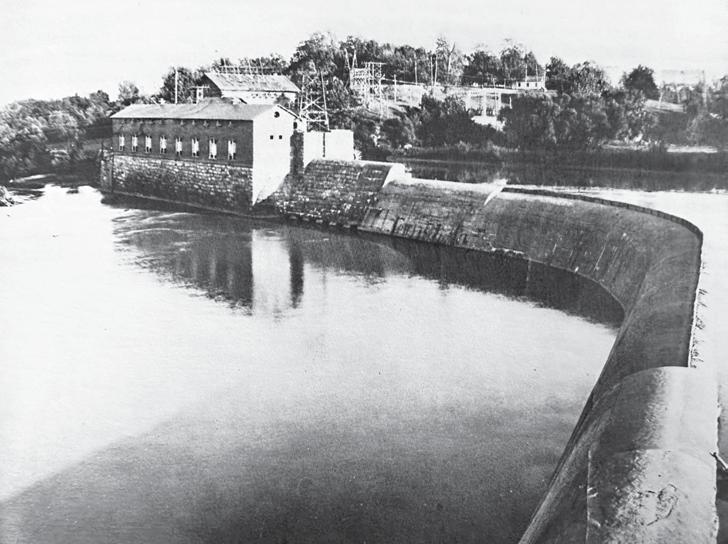
The half century from 1880 and 1930 was a formative period in the history of power generation across the U.S. The South, then being called the New South, was still predominantly agricultural and rural in 1900. Development arrived rapidly, delivering notable advances for the poverty-crushed region. The most noteworthy, and indeed enduring, of those efforts came from two wealthy tobacco tycoons from North Carolina, James B. Duke and his older brother Benjamin N. Duke, who focused his efforts on the booming textile industry. The brothers sought to harness the power from the rivers that previously flowed unused as “waste to the sea” and coined the term “white coal.”
As an outgrowth of the family’s interests in textile manufacturing and the need for affordable power, the Duke brothers became interested in hydroelectric power around the turn of the century. James organized the American Development Company and began acquiring land and water rights on the Catawba River.
In 1904 he established the Catawba Power Company and in 1905 launched the Southern Power Company, headquartered in Charlotte. These pioneering ventures, which played a major role in the rapid industrialization of the Piedmont region of the two Carolinas, later became the Duke Power Company.
After the mid-nineteenth century, the Savannah River was drastically altered to solve the New South region’s water problems and meet the growing energy needs for urban and industrial uses. In 1924 Southern Power consolidated smaller energy utilities in North and South Carolina and was renamed Duke Power. After the drought of 1925, Duke Power no longer viewed hydroelectric dams as the energygenerating standards and instead, for a period, turned to black coal–fueled steam technology as a method of generating electricity to the power grid.
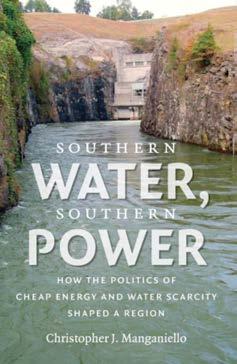
The availability of reliable electricity from Southern Power/Duke Power played a significant role in the economic growth of the Upstate region, facilitating the development of industries and communities.
Please consider reading Southern Water, Southern Power: How the Politics of Cheap Energy and Water Scarcity Shaped the Region, by Christopher J. Manganiello, for additional information on this aspect of the development of southern power.
An important footnote: Duke Energy is committed to fully exiting coal by 2038.

BY DALE WILDE, FOLKS President
The South Carolina Department of Natural Resources (SCDNR) reappointed the Upper Savannah River Basin Council (USRBC) in June 2023. The SCDNR is required by law to create a State Water Plan that includes all eight river basins for a 50-year period. The Water Plan recognizes the economic importance of water and the multitude of uses that it has, from hydropower generation and water supply to recreation and tourism.
The first State Water Plan was published in 1998 and updated in 2004. The Upper Savannah River Basin is under the purview of the USRBC, comprised of a diverse group of stakeholders from eight different water interest categories. The current 23 members are responsible for developing the Upper Savannah River Basin Plan, and FOLKS has long been represented on this effort. Dr. Hains, FOLKS Board member and 30-year writer for our magazine, brings technical and historical expertise to the USRBC.
The Savannah River Basin’s development is a story of human ingenuity and environmental management. Historically, it was home to indigenous peoples who lived off its resources. With European settlement came agriculture, then industry, and the harnessing of the river for power and navigation. Today, it’s a carefully managed ecosystem balancing human needs with conservation efforts, supporting agriculture, industry, and recreation while protecting its biodiversity and water quality. The Upper Savannah River subbasin is one of the most developed subbasins in the state of South Carolina and is a region of numerous flood-control projects and hydroelectric power facilities.
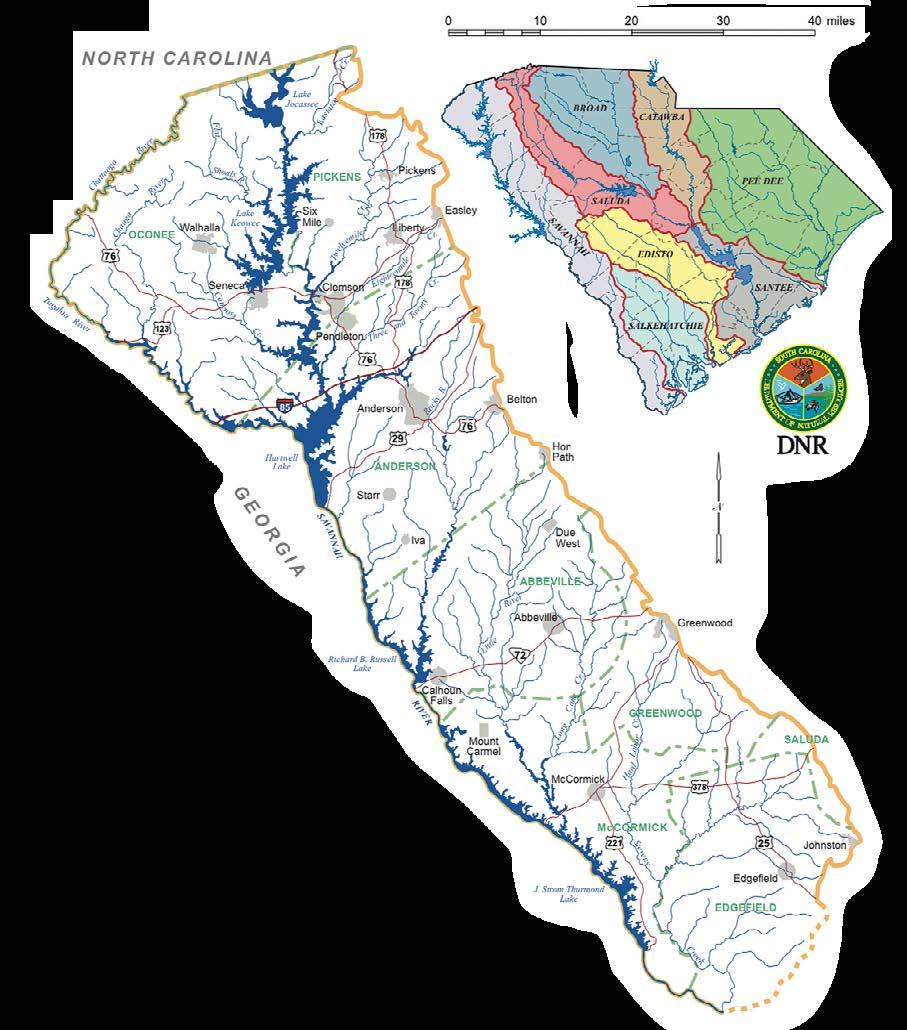
The Upper Savannah River Basin comprises several reservoirs, including Lake Hartwell, Lake Russell, Lake Thurmond, Lake Jocassee, Lake Keowee, and Bad Creek Reservoir (also known as Lake Jocassee). These reservoirs play vital roles in water
management, hydroelectric power generation, recreation, and environmental conservation within the region.
The reservoirs that comprise the Upper Savannah River Basin, in the order of their construction dates and including the power generation from their sites, are:
1. Lake Thurmond was constructed in 1954; it has
a hydroelectric capacity of approximately 360 megawatts (MW).
2. Lake Hartwell was constructed in 1962 as part of a joint project among the U.S. Army Corps of Engineers, Georgia Power, and the South Carolina Electric and Gas Company; it has a hydroelectric capacity of approximately 610 MW.
3. Lake Keowee was constructed in 1971 by Duke Energy; it has a capacity of approximately 158 MW.
4. Lake Jocassee was constructed in 1973 by Duke Energy; it has a capacity of approximately 610 MW.
5. Lake Russell was constructed in 1985; it has a hydroelectric capacity of approximately 600 MW.
6. Bad Creek reservoir was constructed in 1991 by Duke Energy and the station became operational in 1993; it has a capacity of approximately 1,065 MW.
All three units of the Oconee Nuclear Station, located in Seneca on Lake Keowee in the Upper Savannah River Basin became fully operational in 1973. The station is one of the largest nuclear power plants in the United States. It has a total generating capacity of over 2,600 MW from its three reactors. The capacities at all facilities can vary depending on factors such as water levels and operational considerations. The reservoirs play crucial roles in providing water resources, flood control, and recreation for the Upper Savannah River Basin region.



BY JOHN HAINS, FOLKS representative on the Upper Savannah River Basin Council (USRBC)
The earth has a lot of water. Most of it (about 97.5%) is too salty to drink or use for many purposes. About 2.5% of the earth’s
the earth’s water is in what we would call “surface water”: lakes, wetlands, and streams, and even less is conveniently available to everyone.
Do you worry about being able to water your lawn, wash your car, irrigate your garden? Do you take your tap water for
anticipated supply problems.
Anyone who remembers the drought that occurred through 2008 has an appreciation for the importance of water resources to every aspect of society. At that time much of this region experienced what the U.S. Drought Mitigation Center categorized as “Exceptional Drought”— the most extreme status. In extreme circumstances what priority do we give our various needs? Who makes those decisions and how?
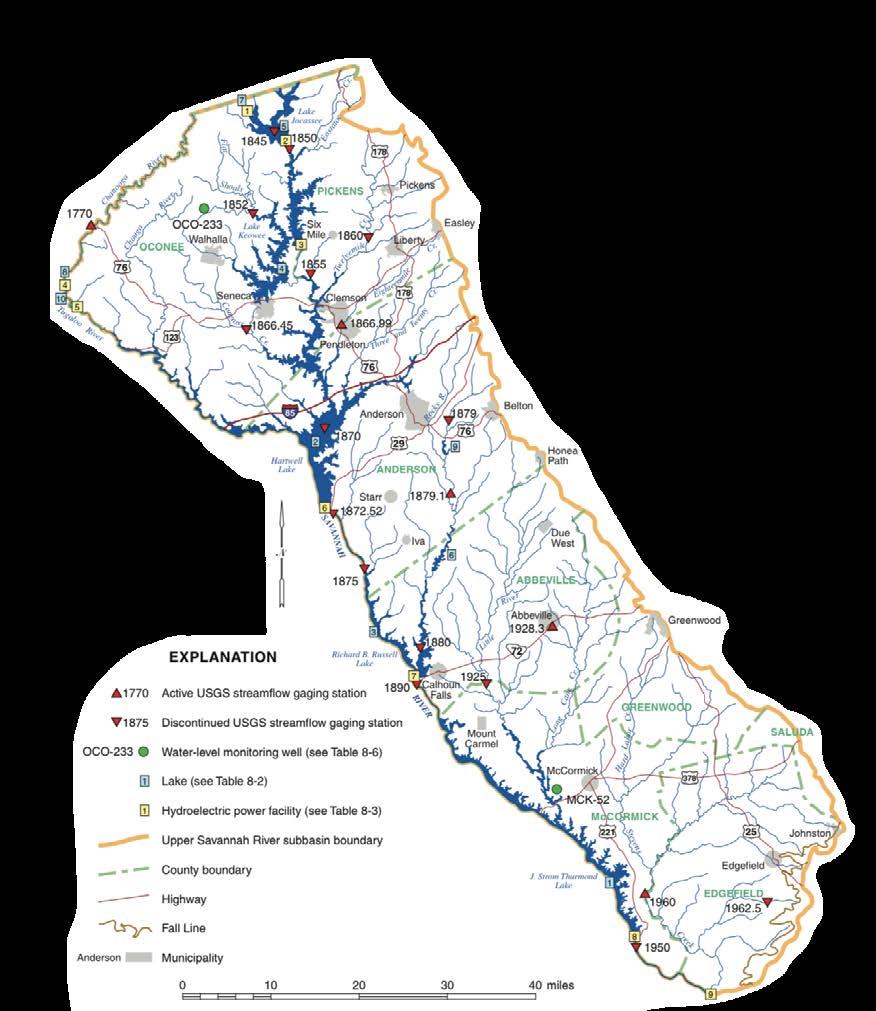
In the Savannah River Basin, by any measure, we enjoy a luxurious supply of water. In addition to Lake Keowee and the rest of the Keowee-Toxaway Project, we also have access to numerous streams and to other lakes in the region, all of which contribute to water abundance, relative to our current needs. Compared to other parts of the U.S. we have few water-related issues. But that could change in the future. By the time you read this, the USRBC will have met monthly for at least a year. Council attendees include representatives from FOLKS and many other individuals and groups that use or depend on our water resources. They have explored how we use these water resources and tried to anticipate what kinds of challenges we may face in the future. The USRBC’s geographic region encompasses the Savannah River Basin that is upstream of Augusta, Georgia and includes all the reservoirs and streams in the upper basin that exist at least partially in South Carolina. Similar councils exist for other river basins in South Carolina, including the Lower Savannah Salkehatchie River Basin Council (LSSRBC) that includes the water resources downstream to Savannah, Georgia as well as the Salkehatchie River Basin. The USRBC and LSSRBC had one joint meeting in February 2024.

Credit: U.S. Geological Survey, Water Science School. https://www.usgs.gov/special-topic/water-science-school; Data source: Igor Shiklomanov’s chapter “World fresh water resources” in Peter H. Gleick (editor), 1993, Water in Crisis: A Guide to the World’s Fresh Water Resources. (Numbers are rounded.)
Representatives from water treatment systems, industry, agriculture, government agencies, and yes, FOLKS and other citizen groups have presented a broad spectrum of activities and concerns, past and present, to the Council with the goal of understanding the current status and planning for the future of these essential resources. Thus far, we have been collecting information on the current status of our water resources, learning how this information is gathered, gaining an understanding of technical details, and learning about modeling efforts to understand and predict future trends and the factors that may impact those trends. The intent is to be able to predict and plan for our future through the year 2070. If 2070 seems a long time from now, you are correct. And while our predictions may not be completely accurate, the response time to a crisis can be very long—as a result it is good to plan such responses in order to be ready, just in case. Moreover, it is important to be realistic and flexible enough to modify plans as our predictions become more accurate—or if conditions change. Those of us who live in the Upper Savannah River Basin are lucky to be able to construct such plans starting with a status of adequate water supplies. If the USRBC is successful, a robust plan will extend that status past the target date. This correspondent will continue to represent FOLKS and you can be sure that once the USRBC has formulated its report and plans, those will be made available to the public. Stay tuned.

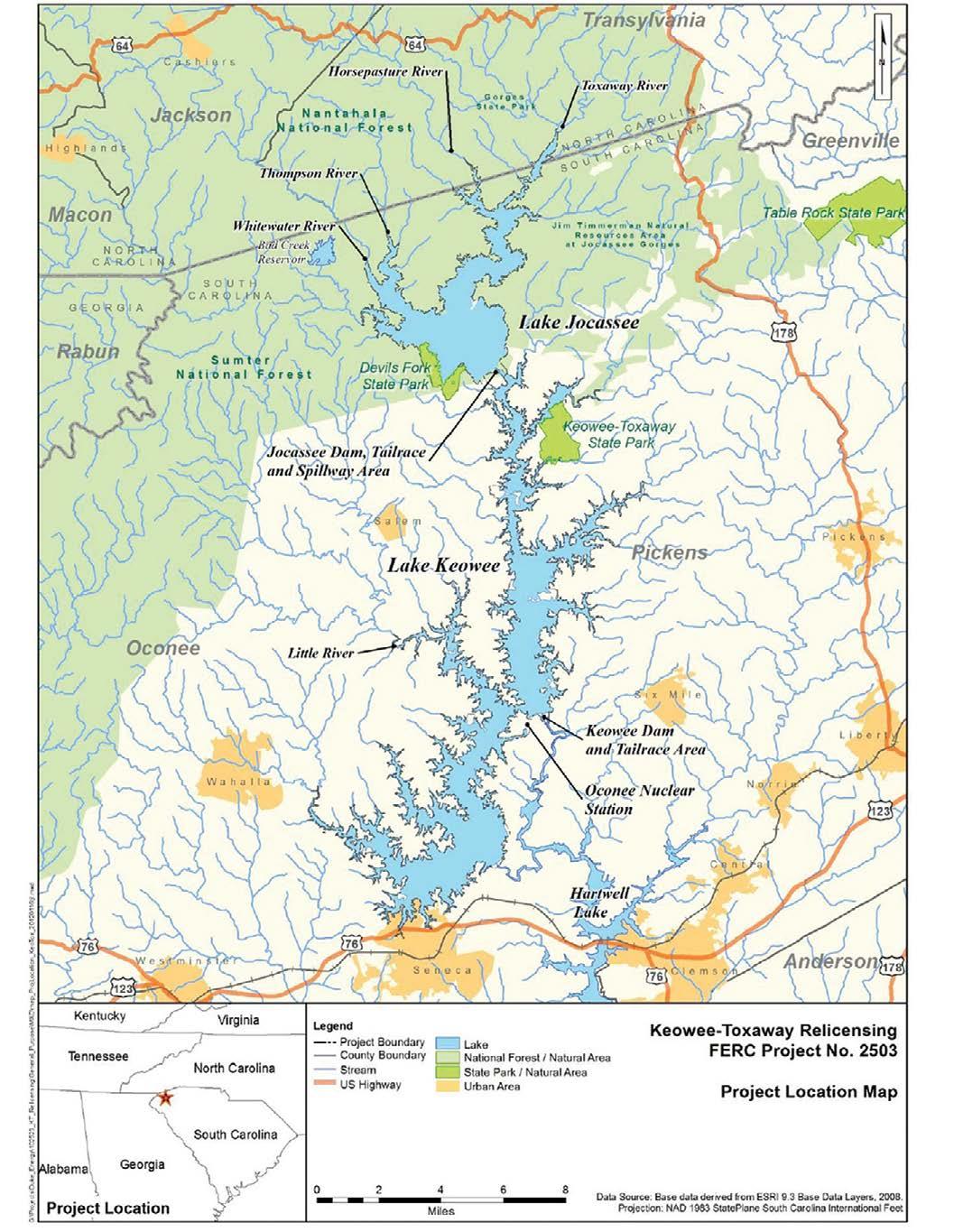

BY DALE WILDE, FOLKS President
The conceptual design of the Bad Creek Pumped-storage Project (FERC Project No. 2740) began in the 1970s and the Federal Energy Regulatory Commission (FERC) license that was issued in 1977 will expire in July 2027. The unique design of having the powerhouse 540 feet deep in Booger Mountain
truly makes this hydro station an engineering marvel.
The Bad Creek Reservoir was formed from the damming of Bad Creek and West Bad Creek and is filled with water from Lake Jocassee. Lake Jocassee, which was licensed as part of the Duke Energy Keowee-Toxaway (KT) Hydroelectric Project (FERC Project No. 2503), is operated by Duke Energy under the terms of an Original License issued by the FERC on August 1, 1977.
The construction of Bad Creek took roughly 10 years, and the project began operating in 1991. The structures and features included in the Bad Creek Project license include the upper reservoir and dams, inlet/outlet structures in the upper and lower reservoirs, water conveyance system, underground powerhouse, tailrace tunnels, transmission facilities, and a 9.25-mile-long transmission line extending from Bad Creek to the KT Project’s Jocassee switchyard.
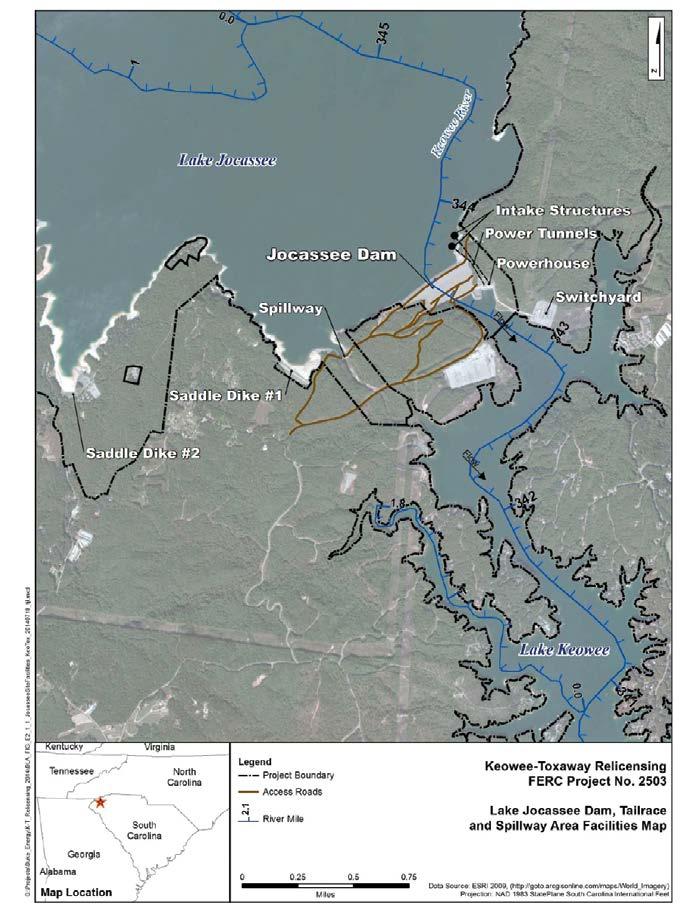
The original turbines were designed in the 1980s and the plant came online in 1991, with four generating units and a station authorized installed capacity of 1,065 megawatts (MW).
Bad Creek is essentially Duke Energy’s largest battery. Its construction cost nearly $1 billion. It was finished one year ahead of schedule and $90 million under budget.
The Bad Creek Powerhouse, built within a large cavern inside a mountain, takes advantage of gravity to produce larger quantities of electricity because of the 1,200 vertical feet that separate the upper and lower reservoirs.
Bad Creek operates on a “daily cycle” mode, commonly alternating between generating and pumping on a daily basis, with the upper reservoir surface elevation typically maintained in the upper 50 to 60 feet, compared to a maximum drawdown of 160 feet. This operating mode allows Duke Energy to maximize head, energy density, and plant/unit efficiency and utilize the project like a massive battery to help balance the regional transmission system, including rapid consumption or generation of power due to variable solar energy production.
In October 2020, Bad Creek Station
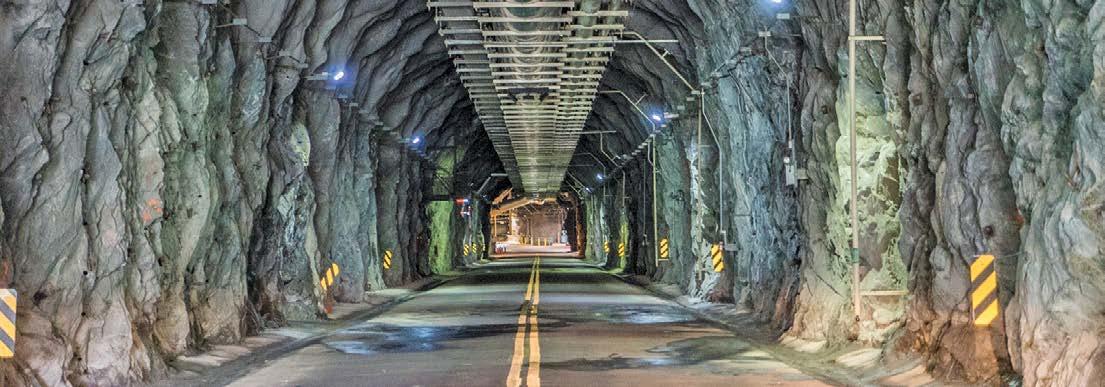
The now 30-year-old project is one of the most powerful and flexible energy generation and storage assets in Duke Energy’s system. Originally built primarily to store surplus energy from baseload nuclear and fossil fuel power plants during times of low energy demand, today Bad Creek is used to balance an increasingly complex energy grid.
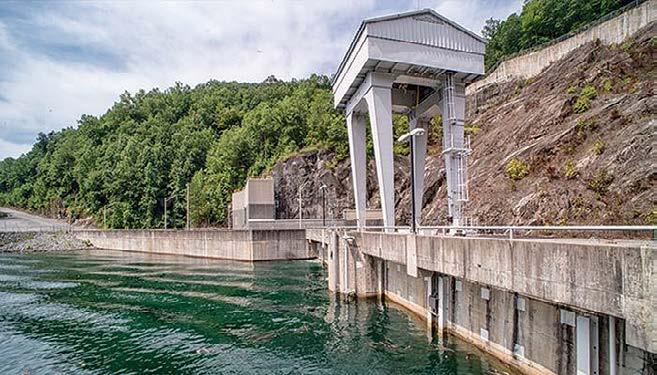
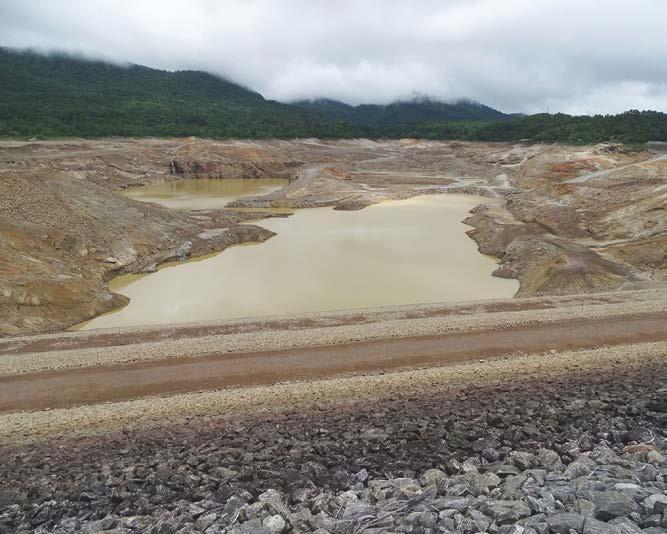
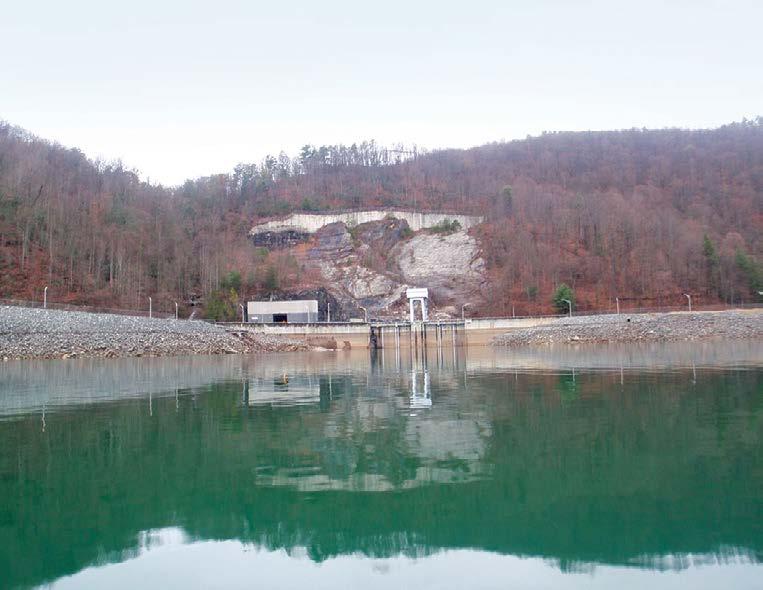
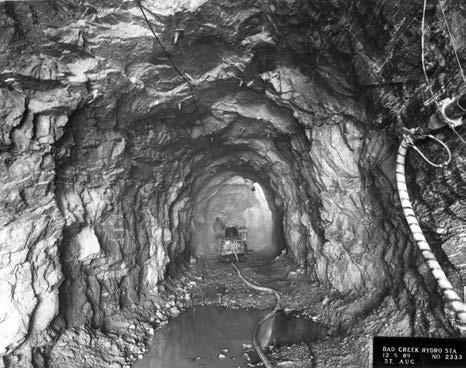
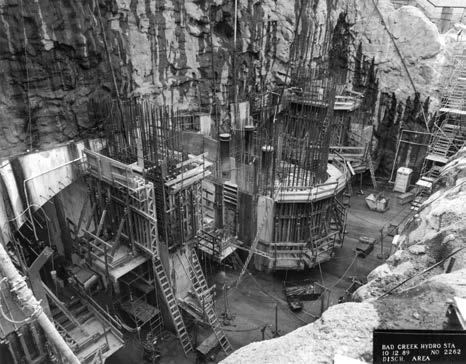
Length of main dam: 2,600 feet
Full pond elevation: 2,310 feet above mean sea level
Upper reservoir: 318 acres at full pond
Powerhouse cavern: 75 feet wide, 164 feet high, 433 feet long
Discharge tunnels: 1,200 feet long
Total project site: approximately 1,600 acres
completed the first of four unit uprates, with Unit 2 commissioned to provide an additional 70 MW of generating capacity. (The overhauled pump-turbine unit generator output increased from 340 MW to 410 MW; pump load increased from 310 MW to 375 MW.)
The uprate on Unit 1 was completed in September 2021. Just like with Unit 2, the same additional capacity and regulation band was achieved with the Unit 1 upgrade.
Uprate work on Units 3 and 4 were completed in 2024. They have an Authorized Installed Capacity of 1,400 MW, which makes Bad Creek one of the largest pumped storage hydro stations in the U.S.
The now 30-year-old project is one of the most powerful and flexible energy generation and storage assets in Duke Energy’s system. Originally built primarily to store surplus energy from baseload nuclear and fossil fuel power plants during times of low energy demand, today Bad Creek is used to balance an increasingly complex energy grid. Pumping water from Lake Jocassee up to the Bad Creek Reservoir provides a means of storing energy from surplus baseload generation during low demand periods and other non-dispatchable renewables generation during certain periods, and operation in turbine mode, from the Bad Creek Reservoir to Lake Jocassee, provides power back to the grid when energy demand is higher or renewable generation is not available.
In 2022, Duke Energy filed a Pre-application Document (PAD) as well as a Notice of Intent (NOI) to relicense the Bad Creek Project. Contained in the PAD is an alternative to potentially construct a second powerhouse—a 1,400 MW Bad Creek II Power Complex to be built within the existing Bad
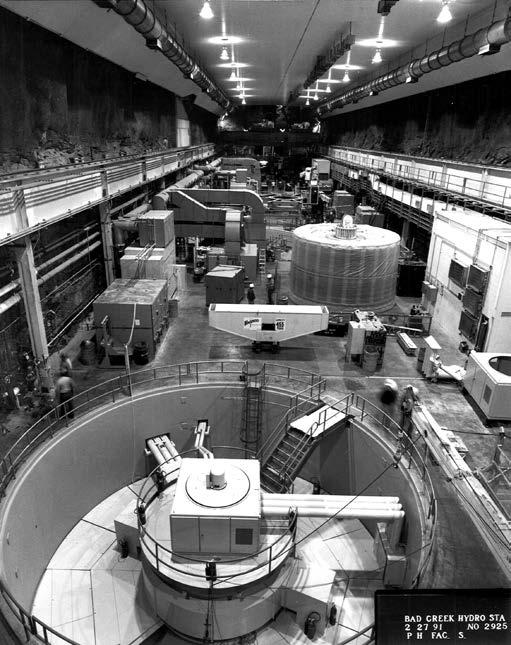

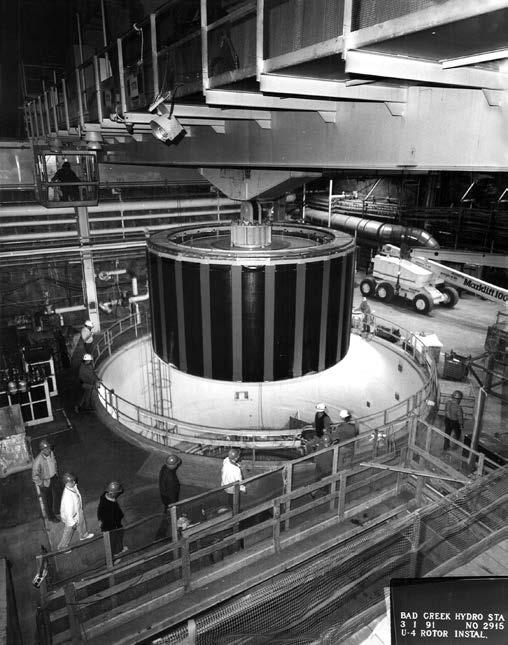
With the current and projected growth in the region, the Bad Creek complexes would serve to keep up with the growing demand for electrical power in the region and meet Duke Energy’s goal of fully exiting coal by 2035. FOLKS has served on the stakeholder group during the multiyear reauthorization process and contributed comments during the study phases for Bad Creek II. Our board is very supportive of the Bad Creek II project. We see the benefit the reauthorization of Bad Creek I and support the expansion of Bad Creek II as it will have a positive impact on the region.
In a February 2024 article in Hydro Review, Duke Energy announced that it released its 2023 Carolinas Resource Plan. That plan details their expectation to extend the original operating license for 50 years for the Bad Creek pumped storage project and essentially double the capacity of the site by creating a second Bad Creek Pump Storage facility.
Given the need for additional significant energy storage and renewable energy generation across Duke Energy’s service territories over the Project’s new license term, Duke Energy is evaluating opportunities to add storage and generating capacity at the Bad Creek Reservoir by constructing a new power complex, Bad Creek II, which would include a new underground powerhouse adjacent to the existing Bad Creek Powerhouse. Construction of the Bad Creek II Power Complex that would double the current energy generation capacity is
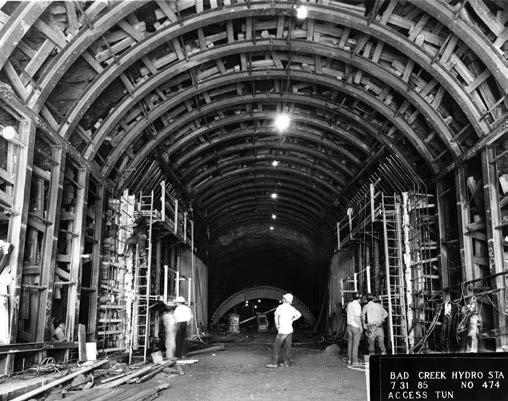
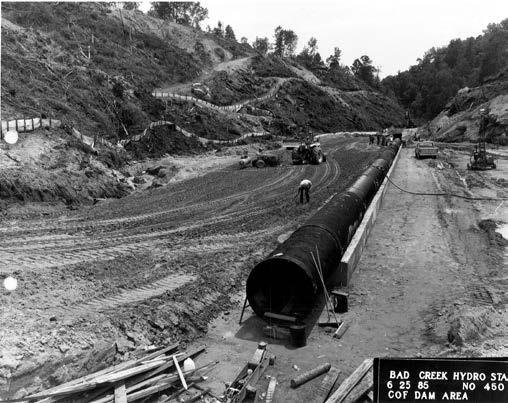
one alternative relicensing proposal that Duke Energy is currently evaluating. The Bad Creek II Power Complex would take advantage of typically unused storage capacity in the upper reservoir to roughly double the energy generation and storage pumping capacity of the current project. If approved by FERC, it would require about $5 billion in capital investment, and construction is anticipated to last six years.
The Bad Creek II facility will have a capacity of 1,700 MW. According to the 2023 Carolinas Resource Plan, Bad Creek II Pumped Storage Hydro is projected to come into service by mid-2033. Bad Creek II will operate using the same reservoir as Bad Creek I and the only minor change would be to the project boundary to accommodate additional transmission lines.
The Bad Creek II Power Complex would be constructed within a slightly modified footprint of the existing project boundary limits. Major features would include new water intake/discharge structures on the Bad Creek Reservoir and Lake Jocassee, a second underground powerhouse and water conveyance tunnels, a new transformer yard, and a new transmission line.
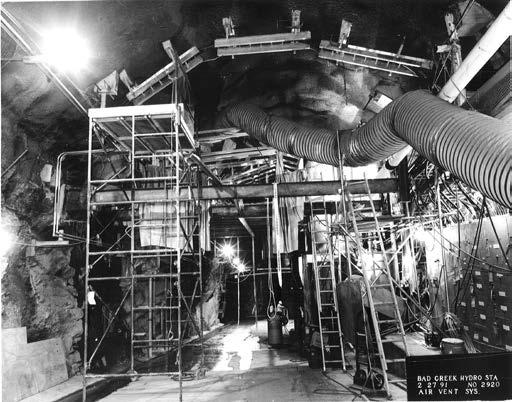
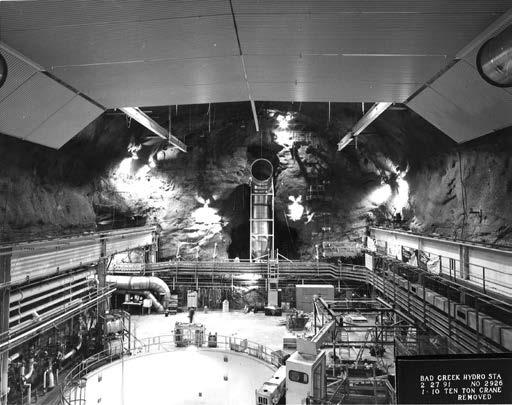
Duke Energy is evaluating new pumped-storage and battery storage as part of various potential scenarios to provide increasingly clean, reliable, renewable, and affordable energy to its customers. Duke Energy has decided to pursue the Bad Creek II Power Complex and plans to obtain all necessary regulatory approvals. Construction would span approximately six years. With the relicensing process expected to end by mid-2027, the second powerhouse would be operational around 2033. Duke is pursuing a 50-year license to operate both complexes. Stay tuned for further updates on the Bad Creek reauthorization in the coming year.
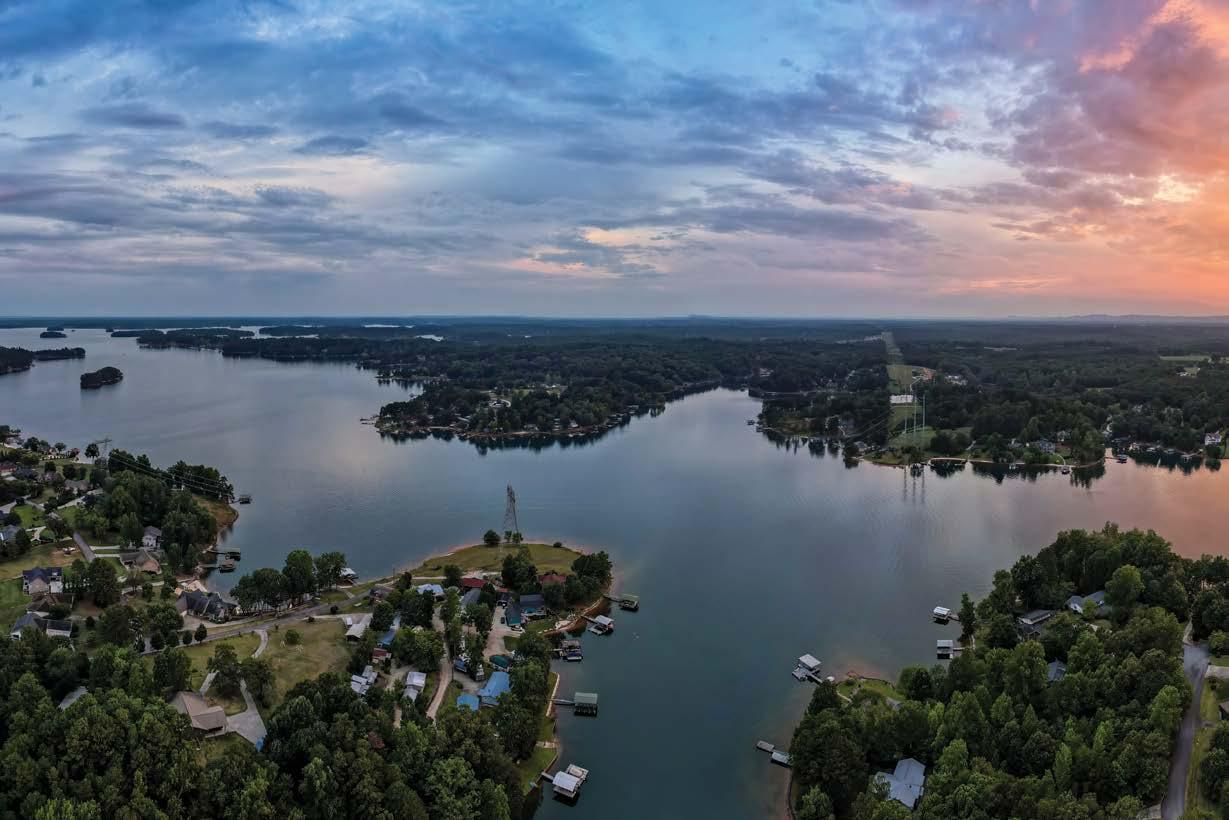
BY DALE WILDE, FOLKS President
Lakes Keowee and Jocassee are strategically located in the foothills of the Blue Ridge Mountains and were developed to take full advantage of the energy-rich mountain streams that drain through the Upper Savannah River Basin. Both reservoirs were developed into significant energy producing hydro and nuclear power. The picturesque bodies of water are the result of significant human intervention and environmental transformation.
The planning for the development of hydropower in this region was researched for more than 50 years. As early as 1911, a geologic study reported that “this rock is too good not to use for hydroelectric.” The report prompted a group led by James Buchanan Duke to craft a plan to build a system of lakes and dams along the seam of rock, which runs parallel to and east of the Appalachian Mountains, from Virginia into middle Georgia. As detailed in another article in this issue of KEOWEE magazine, the Duke brothers invested much of
their fortune to purchase the land and water rights for the development of hydroelectric power in the Piedmont region and throughout the Carolinas.
Duke Power decided on the Keowee-Toxaway Valley location in 1948. In 1963, the company formed a subsidiary called the South Carolina Land and Timber Company to purchase significant tracks of land needed for the KeoweeToxaway Energy Project.
Duke Power Company sought to harness the natural flow of the Keowee and Little Rivers, which required substantial land clearing to create Lake Keowee, including the removal of forests, farmland, and even some residential areas to create the sprawling lake that would flood approximately 18,500 acres of land.
The clearing process was complex, involving careful planning and execution to minimize the environmental impact. Thousands of acres of trees were cut down and their stumps removed, and significant earthwork was undertaken
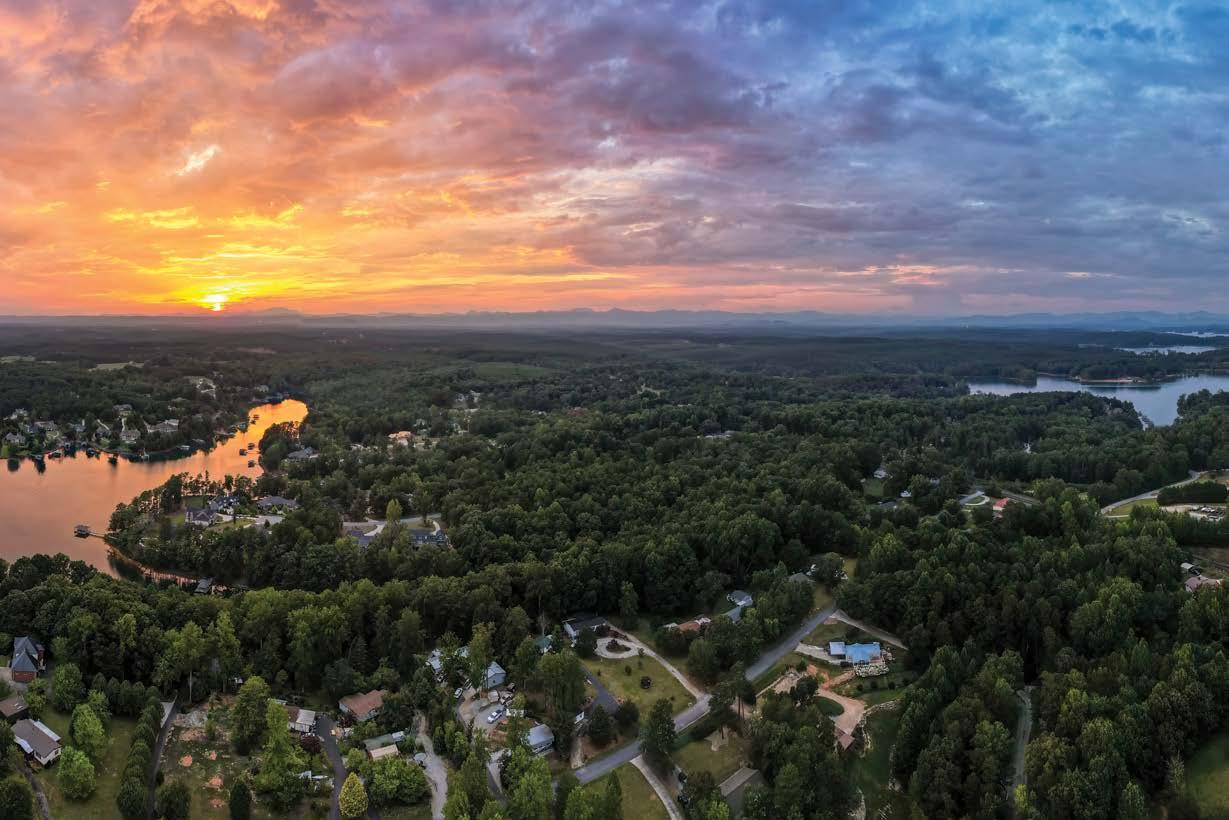
Fort George, a significant historical site, was originally established by British forces during the French and Indian War in the mid-18th century. It was strategically located near the Keowee River in present-day South Carolina and served as a military outpost to protect settlers and maintain control over the region.
to allow the waters to form the lake to the current contours. While the flooding of land meant the loss of original habitats, the creation of Lake Keowee also provided new ecological opportunities and improved habitat for many species. The lake expanded the natural habitat for various species of fish and wildlife, contributing to biodiversity in the region.
The construction of Lake Keowee required the flooding of substantial land areas, including the site of Fort George. As a result, the fort and its surrounding structures were submerged beneath the waters of the newly created lake. The flooding led to the permanent loss of the fort as a visible landmark, along with
other historical artifacts and remnants associated with the site.
With the need for additional power in the mid-twentieth century, Duke Power President W.B. McGuire looked to the Oconee and Pickens county area to develop a massive powergenerating complex and system of lakes. The combined planning and construction efforts for the project were an ambitious endeavor and had the potential for major impacts to water flows on the Savannah River and its tributaries.
The Keowee-Toxaway (KT) project began with the first issuance of the FERC license (P-2503) of the agreement between Duke Energy, the U.S. Army Corps of Engineers (USACE), and the Southeastern Power Administration (SEPA) that balances the combined percentages of remaining usable water storage between KT and the USACE’s Hartwell and J. Strom Thurmond hydroelectric projects. The first issuance of the KT Hydroelectric Project license was September 1, 1966. Construction of the Keowee-Toxaway Hydroelectric Project (Project) began with a detonated dynamite blast by South Carolina Governor Robert McNair at the official groundbreaking ceremony on April 11, 1967.
The completion of Lake Keowee in 1971 marked a significant achievement in energy production and recreation.
The KT project includes two developments. The Keowee Development is a conventional hydropower facility that includes Keowee Dam, Little River Dam, four saddle dikes, the Oconee Nuclear Station intake dike, Lake Keowee, a gated spillway, the Keowee powerhouse, an excavated tailrace, and an intake structure. Duke Energy typically operates Lake Keowee between elevations 794.6 feet and 799.5 feet above mean sea level (AMSL).
The creation of the Lakes led to significant economic
The Keowee-Toxaway project was entered in an American Society of Civil Engineers national competition in 1975, when it was selected “The Outstanding Civil Engineering Achievement” of that year. There is a historical marker at the World of Energy detailing this remarkable achievement.
growth in the surrounding areas, promoting tourism, real estate development, and outdoor activities such as boating, fishing, and hiking. The scenic beauty of Lake Keowee has made it a desirable location for residents and second-home owners. Today, Lake Keowee represents the balance between progress and preservation, open to all to enjoy its natural beauty and recreational offerings. The total cost at that time for the
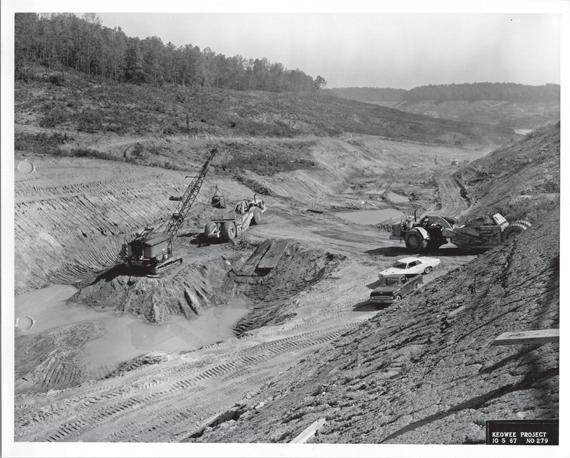









Keowee-Toxaway project was $700 million. The lands adjoining the Project now support thriving residential communities as well as unique and special botanical and wildlife communities. The powerhouse contains two Francis turbine/generator units, each with an authorized installed capacity of 78.75 megawatts (MW). The total authorized installed capacity for the powerhouse is 157.5 MW. Flows from the Keowee powerhouse are released directly into Hartwell Lake, which is a flood control reservoir operated by the USACE on the Savannah River.
• First 50-year FERC License was obtained in 1966, in 2014 it was reauthorized for 30 years
• Construction was completed in 1971 and began generating hydropower
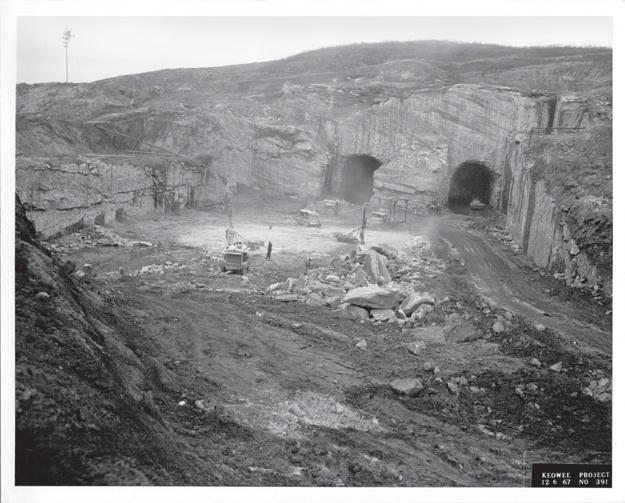
• Comprises over 18,500 acres and 387 miles of shoreline
• Average depth 53 feet; Maximum depth 158 feet
• Water that feeds the lake include Keowee, Toxaway, Whitewater, and Little Rivers
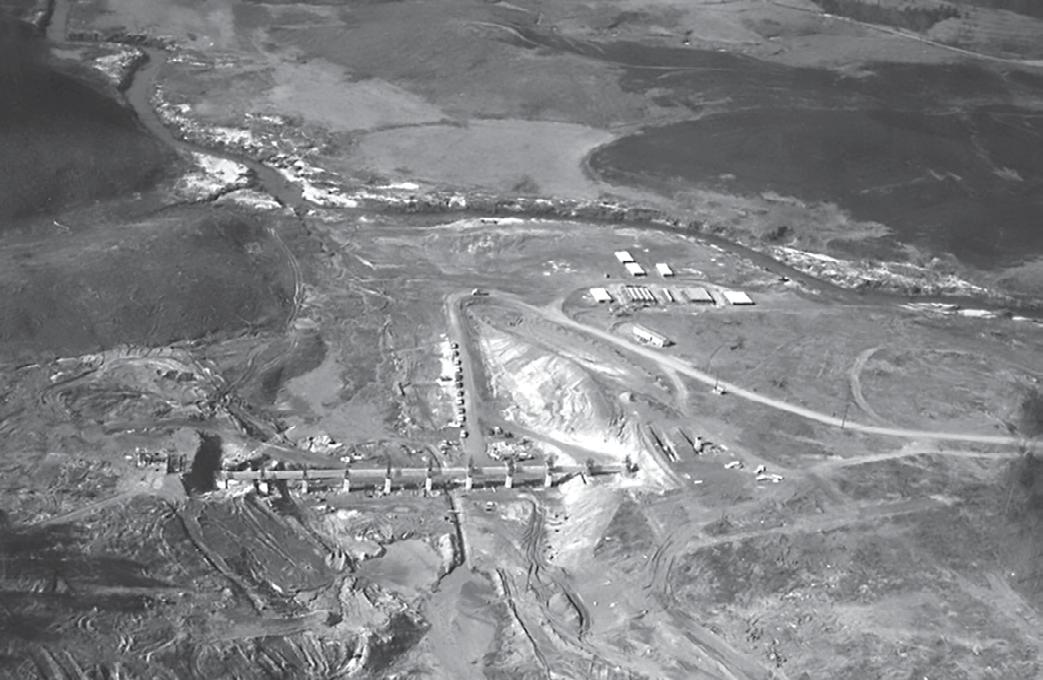
The Jocassee Development was licensed under the Keowee-Toxaway Project P-2503. The construction of Lake Jocassee involved several major elements that contributed to its creation as a hydroelectric reservoir. The planning phase involved extensive studies to assess the feasibility of the project, including environmental impact assessments and hydrological studies. Local communities and stakeholders were also consulted to address concerns regarding the flooding of land and changes to the ecosystem. The lake’s design also aimed to preserve the natural beauty and biodiversity of the region, maximize the energy production potential, and create a safe recreational area for the public. The site preparation was not as extensive as that of Lake Keowee and residents within the defined project boundary were relocated. The area designated for the lake was partially cleared, and some structures, roads, and vegetation were removed to make way for the reservoir. Many structures were left intact and remain under the lake to this day.

The Jocassee pumped storage facility includes Lake Jocassee, which is the upper reservoir; two saddle dikes; two cylindrical intake structures; Jocassee Dam; two water

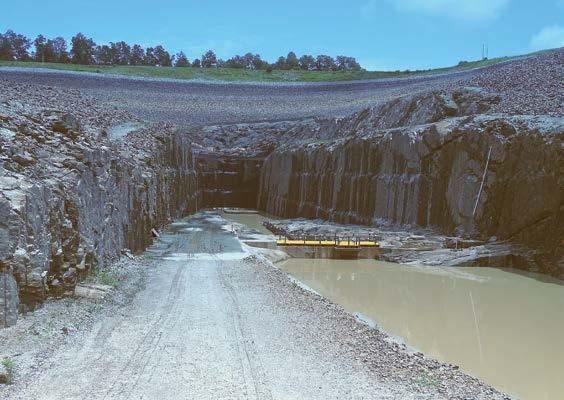
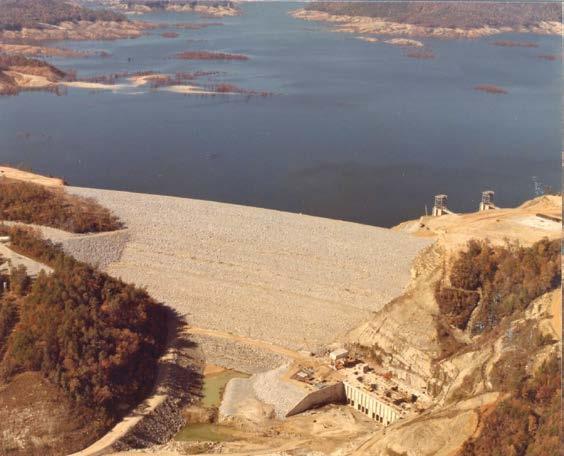
conveyance tunnels; a powerhouse/pumping station; a gated emergency spillway; and Lake Keowee, which is the lower reservoir. The powerhouse contains four reversible pumpturbine units, each with an authorized installed capacity of 177.525 MW. The total authorized installed capacity for the powerhouse is 710.1 MW. The development generates power during peak electricity demand periods, typically during the day, and pumps water from Lake Keowee back to Lake Jocassee during low energy demand periods, typically at night. The existing KT license authorizes Duke Energy to operate Lake Jocassee between 1,080 feet and 1,110 feet AMSL.
The innovative engineering design of Lake Jocassee created a stable and efficient reservoir. The Jocassee Dam is the primary structure of the lake and stands 385 feet tall and stretches 1,750 feet across. This earthen dam was designed to hold back the waters of the Jocassee River and its tributaries. Engineers employed advanced techniques to ensure the dam’s
• Completed in 1973
• Comprises 7,500 acres and 75 miles of shoreline
• Average depth 158 feet
• Maximum depth 326 feet
• Fed by Horsepasture, Toxaway, Whitewater, and Thompson rivers
stability and safety. The dam’s design included spillways and outlet works to manage water flow and maintain safety during heavy rainfall.
The construction of Lake Jocassee is a remarkable example of engineering ingenuity and environmental stewardship. By balancing the need for energy production with the preservation of natural resources, the project has created a lasting legacy. Today, Lake Jocassee stands as a testament to human achievement and the beauty of the natural world, serving both practical and recreational purposes for generations to come. Today, Lake Jocassee is not only a vital source of hydroelectric power but also a popular destination for outdoor enthusiasts.

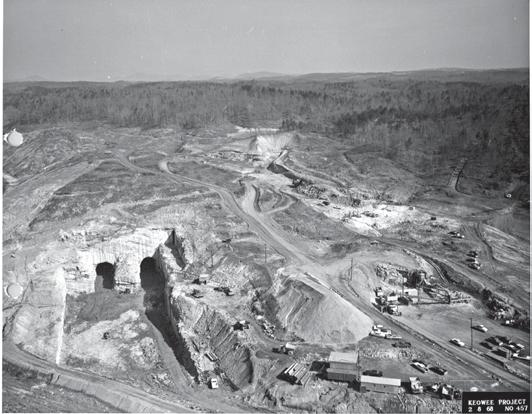
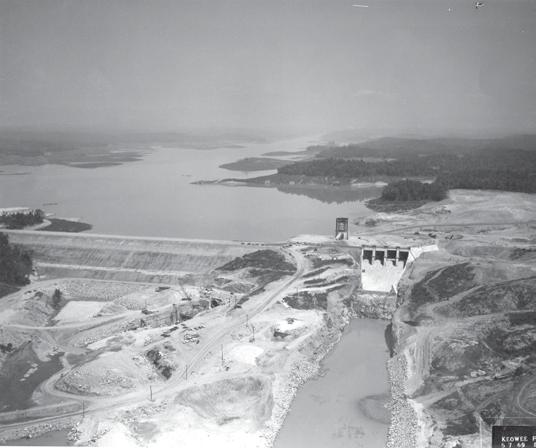
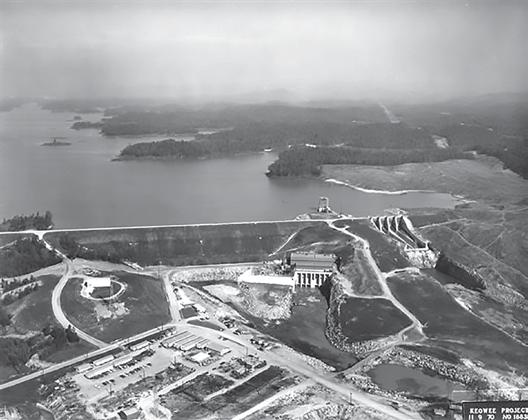
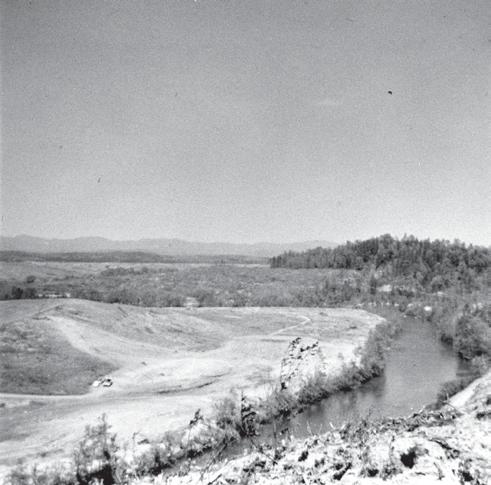
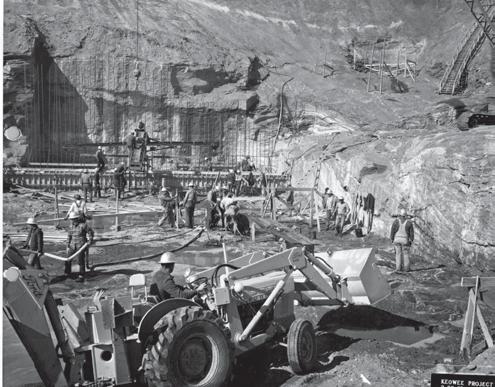

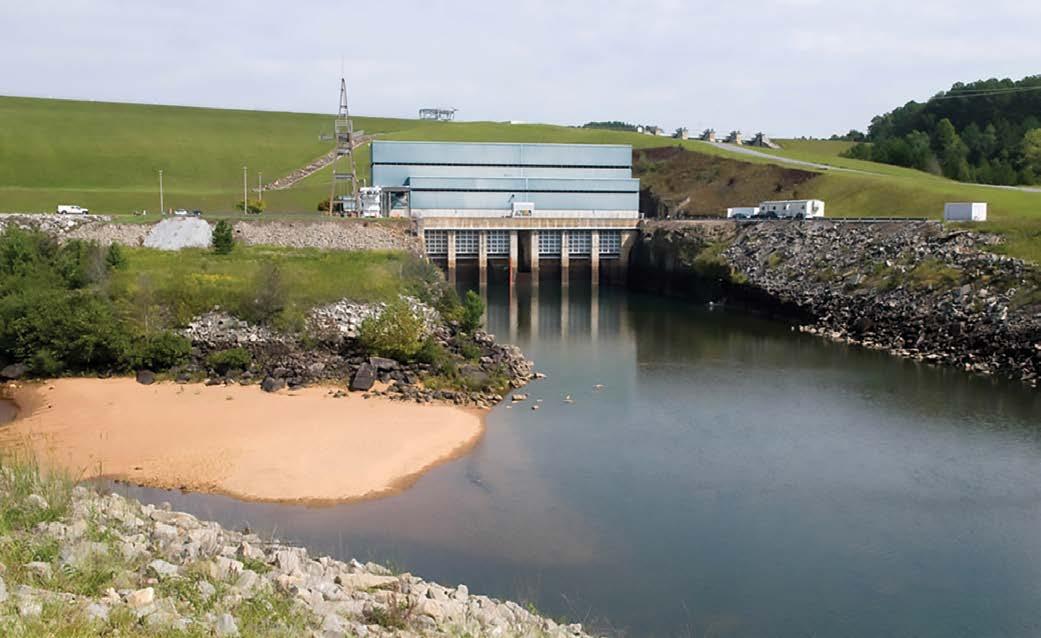



We appreciate the support of our Corporate and Business Members and know that they will appreciate your patronage. When you do so, please thank them for supporting FOLKS.
Blue Ridge Electric Cooperative, Inc.
City of Seneca
David Vandeputte—Joan Herlong Sotheby’s International Realty
Duke Energy
Greenville Water
Greg Coutu—Allen Tate Realty
Keller Williams Seneca Keowee North—Patti & Gary Cason, Melissa Cason Custer, Corey Custer
Keowee Key Property Owners Assn.
Oconee Federal Savings & Loan
Stoneledge Home Owners Association
The Cliffs Fall South HOA
The Reserve at Lake Keowee
Action Services of Oconee, Inc
Advocates for Quality Development
Allen Tate—John Pulliam
Backwater Landing
Blue Ridge Bank
Carolina Bay Healing Spring Waters
Carolina Wealth Management
Classic Lighting
Custom Dock Systems, Inc.
Dolly’s Roofing
Dorn’s Landscape Service
For the Birds, Inc.
Golden Corners Lakes Sail & Power Squadron
Goldie & Associates
Justin Winter & Assoc.
Keller Williams, Seneca— Chuck & Eva Gouge with Sandy Hadesty
Keowee North Marine
Kingfisher Maps
Kroeger Marine Construction
Lake Keowee Marina
Melanie Fink and Associates—Allen Tate Realty
Metal Lake Maps— Ken Van Natta
Northwestern Supply
Porch Conversion of Seneca
Rainmaker Ponds and Irrigation
Sexton Griffith Custom Builders, LLC
Shorescapes, Inc
Strickland Marine and RV
The Boat Dock Company
The Cliffs at Keowee Falls
The Happy Berry
The Lake Company —Lake Keowee
The Wine Emporium
T & M Custom Docks
Upstate Insurance Agency
Vassey Financial Planning and Investments
Waterford Pointe HOA
The Board very much appreciates all of our members, both the long-term members who have been with us since our founding, those that have supported us over the decades, and those that have joined recently. We hope that this magazine issue will highlight the importance of why FOLKS was established in 1993 and why 31 years later it is just as relevant. The membership of FOLKS serves as a united voice as a stakeholder in the region, one that represents our mission to preserve and conserve our watershed.
We also are grateful to all our advertisers and corporate and business members who help sustain our magazine and our efforts to provide educational opportunities in the watershed. Our magazine has evolved immensely since 1993 and we hope to continue this momentum moving forward as we roll out our new logo.
Our new logo was designed by Ella Gutenstein to illustrate the Board’s decision to inspire that next generation of leadership to come forward to keep FOLKS relevant for the decades to come. As long as Lake Keowee is here, the Friends of Lake Keowee Society will be here as a strong and respected voice for its preservation. Please consider getting involved in one of our committees. We are always looking for help with organizing events, marketing, advertising,






FOLKS’s 30-year history has been built upon the pillars of our mission statement that clearly focuses our efforts on advocacy, conservation, and education—ACE. Our achievements over the past few years:
• Stakeholder for relicensing efforts in the watershed
• Uniting voice in the state for boating safety
• Sustained efforts with litter cleanup and prevention
• Ombudsman and information resource for members and communities
• Adopt-a-Stream water quality monitoring
• Bi-annual Lake Sweeps and Island Keepers programs
• Installation of fish habitat—Since 2022 FOLKS installed more than 215 Dock Pro Kits and over 400 larger fish habitats throughout the lake
• Bluebird nesting boxes and osprey platforms
• Publication of the magazine—KEOWEE
• Jack Lewis Watershed Stewardship Scholarship Program—We have selected 6 local high school students for the 2024–25 program.
• Bill Miller Adopt-a-Stream Lending Library— Provided $5,000 funding for local area schools to support stream monitoring efforts
• Outreach/virtual town halls to local Home Owners Associations
• Presentations to at Newcomers, Rotaries, and community presentations at World of Energy
We are excited about 2024 and continuing our stewardship of preserving the lake and serving as stakeholder on important lake and watershed issues. We are focusing our efforts this year on more community engagement and working with local area schools to help them develop meaningful STEM projects. Join our team of volunteers and become a member!
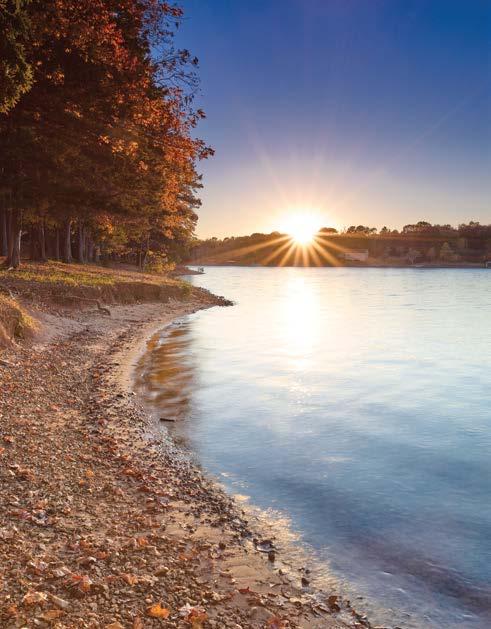
Looking toward the future, our current board has been serving in their positions for over three years. We need to increase the size of board to enable new growth and new ideas. If you are interested in a great opportunity to make a difference in the Lake Keowee watershed, please consider joining our board. I have been President for almost four years, and it has been one of the most rewarding things I have done. I have met hundreds of people who are committed to preserving this beautiful area that we all call home. Join our team! Make a difference!
Mail to: FOLKS C/O, The Alliances, 1201 N. Fant St., Anderson, SC 29621
Name
Phone
Occupation (past/present)
¨ I would like to know about volunteer opportunities. Please contact me.
Contact us: 864.719.0599 | FOLKS@keoweefolks.org
Our membership form is also online at KeoweeFOLKS.org or scan the QR code. Dues and donation are tax-deductible. FOLKS is a 501(c)(3) public service watershed organization.


$1,000 or more (lifetime membership)
$500/yr
for digital copy only of the newsletter

Follow FOLKS on our Facebook page: @KeoweeFOLKS






864.638.6642


















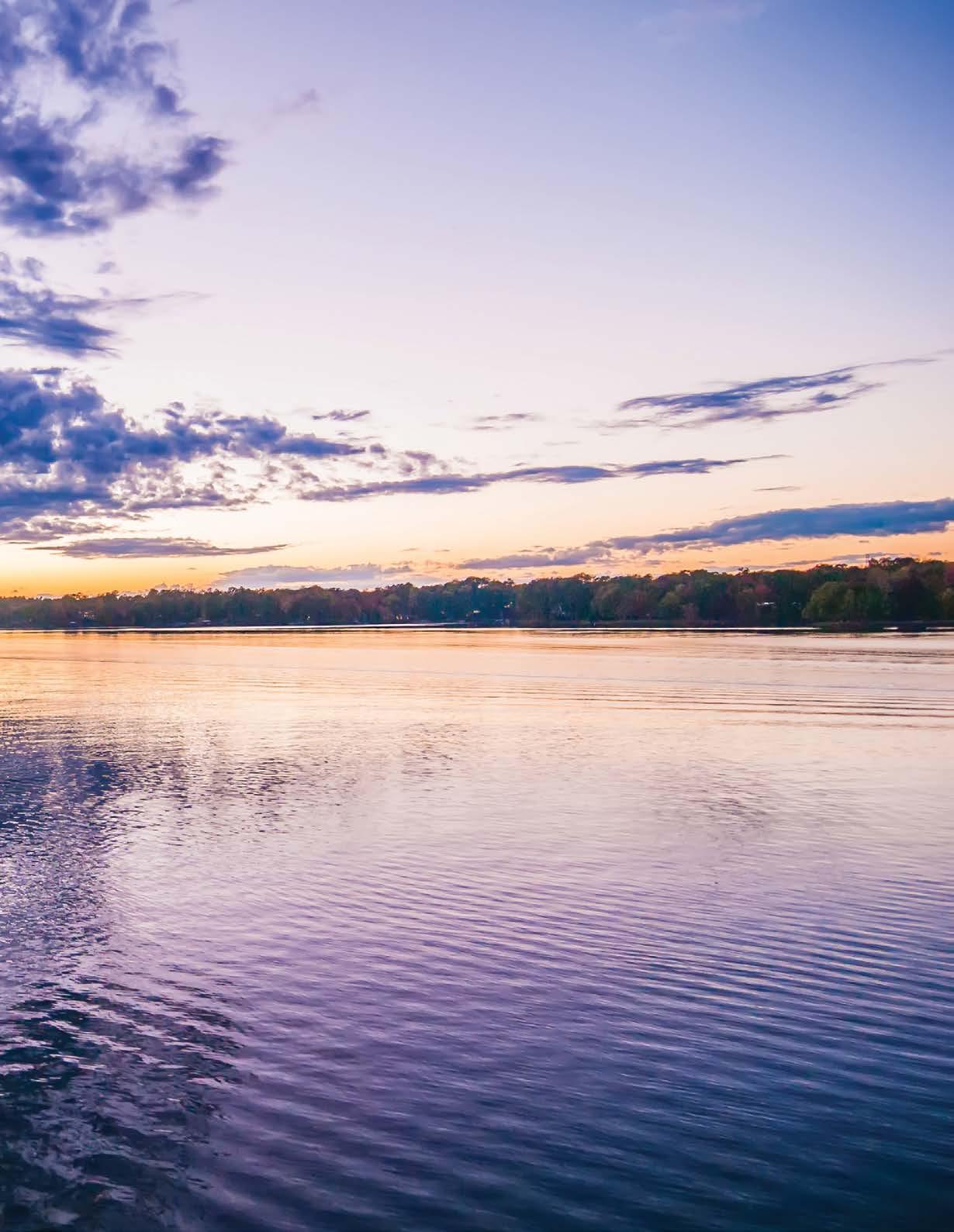





C/O The Alliances
1201 N. Fant St., Anderson, SC 29621
U.S. POSTAGE PAID
SENECA, SC PERMIT NO. 70
The three upstate reservoirs are result of a vision and planning to harness the energy of the Upper Savannah Rivers.
